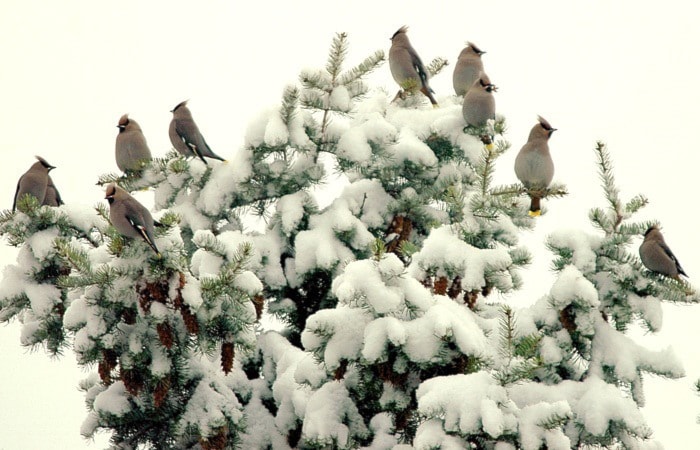Lots of creatures, including humans, hunt down birds. It goes on year-round. Humans have hunted birds for a longer time than I can remember. About 100 years ago, and more recently, in the Eastern United States, around Christmas time, was the well-attended turkey shoot — that is, till the numbers of turkeys dwindled. Then, some thoughtful citizens, realizing it would be of value to know how birds of all kinds were doing and that it would be of equal value to have something contrary to the turkey shoot, initiated a wild bird “hunt”. So was born the Christmas Bird Count.
The Christmas Bird Count is now supported by thousands of volunteers all over Canada and the United States. These outdoor enthusiasts look for birds of any sort, excepting domestic fowl, and identify and record the numbers seen. The results are sent into a processing center to determine bird trends. The wild bird hunt is usually conducted between Christmas and New Year’s. The date for the Creston Valley Christmas Bird Count is Dec. 27.
Participants in the count drive roads and walk in designated areas, by couples and in groups, and record all the kinds of birds that are found. Observers don’t need to be bird experts, but just good at spotting. Another in the group may identify the bird. Several pairs of eyes will pick out a lot more birds than one pair of eyes. Lots of help spotting is needed.
For the Christmas Bird Count, people not only go out there to observe easy-to-find birds and the elusive ones, but others will spend much of the day keeping track of what comes to their bird feeders. Which ever you choose, you could have a refreshing encounter with birds.
I have some great memories of rooting out winter birds. One such memory is the element of mystery. What bird will check me out today? And, where will it make that encounter? Then there is the surprise element.
Winter wrens are just that: winter wrens. The little things can be quite secretive about their movements while they check you out. They haunt underbrush in deep woods and edges along swamps and brooks. That perky little tail is a dead giveaway. Birds that I often see more of in winter than in summer are white-winged and red crossbills and pine siskins. These birds of coniferous forests fly down to the roadsides to find grit to help in grinding their hard seed diet. Christmas-coloured male pine grosbeaks and their grayish-green mates will also seek fine rocks around your home or along country roads. Many get killed on our highways by unsuspecting motorists, so give the birds a bit of a “brake”.
A rare bird in winter is the snipe. It takes a thorough search to detect the motionless form of this swamp bird pausing by a half-frozen, shallow, alder-bordered brook. Another unusual and elusive winter bird is the meadowlark. Like all birds, if around in winter, they will seek out sheltered pockets of landscape where food and water are readily available. For the western meadowlark, that could be around where cattle are being fed, where there is bare dirt and perhaps an old shed for shelter.
In contrast to the rare winter birds are the ones that occur in large numbers. House finch, Canada geese and Bohemian waxwing tallies may, on winter bird counts, total in the hundreds.
If you join in the bird count, whatever birds you spot or may not spot, you may have a well worthwhile experience, just for the scenery, fresh air and the good company. It’s a good idea to bring a lunch and hot drink and binoculars, if you have them. Dress to keep the head, hands, heart and feet warm. To count yourself in, contact Sharon at 250-428-7289 or our feeder friend Catherine at 250-428-8435.
Wishing your great times this Christmas season will become favourite and lasting memories! Happy and healthy celebrations!
Ed McMackin is a biologist by profession but a naturalist and hiker by nature. He can be reached at 250-866-5747.
